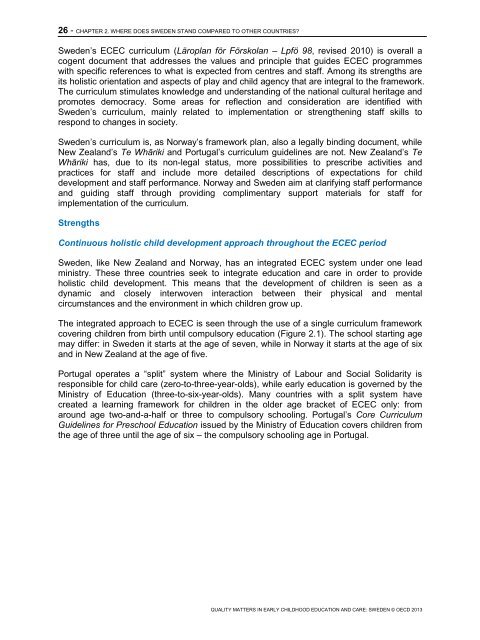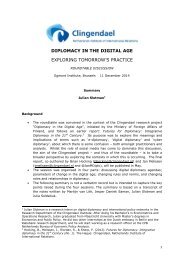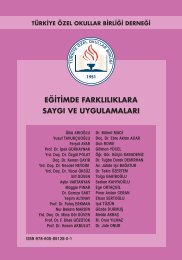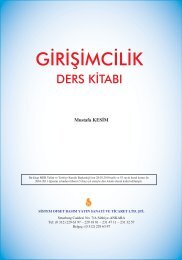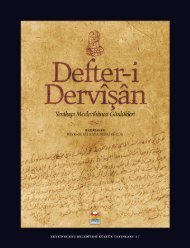SWEDEN%20policy%20profile%20-%20published%2005-02-2013
SWEDEN%20policy%20profile%20-%20published%2005-02-2013
SWEDEN%20policy%20profile%20-%20published%2005-02-2013
Create successful ePaper yourself
Turn your PDF publications into a flip-book with our unique Google optimized e-Paper software.
26 - CHAPTER 2. WHERE DOES SWEDEN STAND COMPARED TO OTHER COUNTRIES?<br />
Sweden’s ECEC curriculum (Läroplan för Förskolan – Lpfö 98, revised 2010) is overall a<br />
cogent document that addresses the values and principle that guides ECEC programmes<br />
with specific references to what is expected from centres and staff. Among its strengths are<br />
its holistic orientation and aspects of play and child agency that are integral to the framework.<br />
The curriculum stimulates knowledge and understanding of the national cultural heritage and<br />
promotes democracy. Some areas for reflection and consideration are identified with<br />
Sweden’s curriculum, mainly related to implementation or strengthening staff skills to<br />
respond to changes in society.<br />
Sweden’s curriculum is, as Norway’s framework plan, also a legally binding document, while<br />
New Zealand’s Te Whāriki and Portugal’s curriculum guidelines are not. New Zealand’s Te<br />
Whāriki has, due to its non-legal status, more possibilities to prescribe activities and<br />
practices for staff and include more detailed descriptions of expectations for child<br />
development and staff performance. Norway and Sweden aim at clarifying staff performance<br />
and guiding staff through providing complimentary support materials for staff for<br />
implementation of the curriculum.<br />
Strengths<br />
Continuous holistic child development approach throughout the ECEC period<br />
Sweden, like New Zealand and Norway, has an integrated ECEC system under one lead<br />
ministry. These three countries seek to integrate education and care in order to provide<br />
holistic child development. This means that the development of children is seen as a<br />
dynamic and closely interwoven interaction between their physical and mental<br />
circumstances and the environment in which children grow up.<br />
The integrated approach to ECEC is seen through the use of a single curriculum framework<br />
covering children from birth until compulsory education (Figure 2.1). The school starting age<br />
may differ: in Sweden it starts at the age of seven, while in Norway it starts at the age of six<br />
and in New Zealand at the age of five.<br />
Portugal operates a “split” system where the Ministry of Labour and Social Solidarity is<br />
responsible for child care (zero-to-three-year-olds), while early education is governed by the<br />
Ministry of Education (three-to-six-year-olds). Many countries with a split system have<br />
created a learning framework for children in the older age bracket of ECEC only: from<br />
around age two-and-a-half or three to compulsory schooling. Portugal’s Core Curriculum<br />
Guidelines for Preschool Education issued by the Ministry of Education covers children from<br />
the age of three until the age of six – the compulsory schooling age in Portugal.<br />
QUALITY MATTERS IN EARLY CHILDHOOD EDUCATION AND CARE: SWEDEN © OECD <strong>2013</strong>


